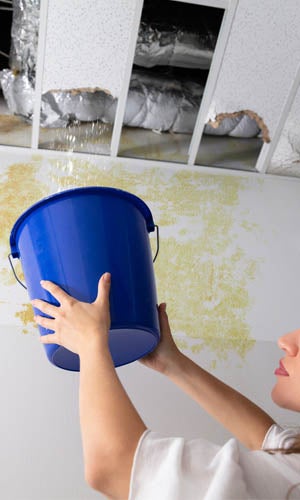The author is making a number of good annotation about Top leak detection hacks in general in this content just below.

Early detection of dripping water lines can alleviate a possible disaster. Some little water leakages may not be visible.
1. Examine the Water Meter
Every residence has a water meter. Checking it is a surefire manner in which helps you discover leakages. For beginners, turn off all the water sources. Guarantee no person will certainly purge, make use of the tap, shower, run the cleaning device or dishwashing machine. From there, most likely to the meter and watch if it will alter. Considering that no person is utilizing it, there ought to be no movements. That indicates a fast-moving leakage if it moves. If you discover no modifications, wait a hr or 2 and also examine back once more. This suggests you might have a sluggish leakage that can even be underground.
2. Inspect Water Consumption
Evaluate your water expenses and track your water intake. As the one paying it, you ought to see if there are any type of disparities. If you find sudden changes, regardless of your consumption coinciding, it means that you have leakages in your plumbing system. Remember, your water bill must drop under the exact same range each month. A sudden spike in your expense shows a fast-moving leakage.
A stable rise every month, even with the very same behaviors, reveals you have a slow leakage that's likewise gradually escalating. Call a plumber to extensively inspect your home, particularly if you really feel a warm area on your floor with piping below.
3. Do a Food Coloring Examination
When it comes to water usage, 30% comes from toilets. If the color in some way infiltrates your dish throughout that time without flushing, there's a leakage in between the container as well as bowl.
4. Asses Exterior Lines
Don't fail to remember to inspect your exterior water lines too. Should water seep out of the connection, you have a loose rubber gasket. One small leak can squander bunches of water and also increase your water costs.
5. Inspect and Evaluate the Situation
House owners must make it a behavior to check under the sink counters and even inside cabinets for any bad odor or mold and mildew growth. These two red flags suggest a leak so timely attention is required. Doing regular inspections, also bi-annually, can conserve you from a major problem.
If you know your house is currently old, keep a watchful eye on your heaters, hoses, pipelines and so on. Check for discolorations and damaging as many home appliances and also pipes have a life expectancy. They will certainly also normally degrade because of tear and also put on. If you suspect dripping water lines in your plumbing system, don't wait on it to rise. Call a specialist plumber right away so you do not wind up with a dreadful mess in your house.
Early discovery of dripping water lines can mitigate a possible catastrophe. Some small water leakages may not be visible. Checking it is a guaranteed method that assists you discover leaks. One tiny leakage can lose loads of water and also spike your water costs.
If you suspect dripping water lines in your plumbing system, don't wait for it to escalate.
How to Know If Your Home Has a Hidden Leak
Water Meter Reveals Inexplicable Water Usage
If you’d like to test whether or not there’s a leak somewhere in your home, you can do this using your water meter. Here is how to conduct the test:
Don’t use any water in your home for at least 30 minutes; this also means not turning on faucets or water-using appliances.
Go outside, and check your water meter for activity.
If your water meter shows that there was activity, even though no one was using any water, this proves that there is a leak in your home.Visible Mold or Mildew Growth
Leaks behind walls create moist, dark environments that allow mold and mildew to grow and thrive. Eventually, you might see mold growth forming on the wall closest to a hidden leak.
If mold is growing in an area that receives a high amount of moisture, such as a bathroom, it may simply be an indication that better ventilation is needed. However, if you see mold growth on a wall or the ceiling in an area where you would not expect, you probably have a hidden leak.
Musty, Mildew Odor
Sometimes you might not be able to see the mold or mildew that is growing as a result of a leak. However, the smell can give the problem away just as easily. If you catch a whiff of something musty, there’s a good chance that old water is collecting somewhere in your home that you can’t see.
Stained/Warped Walls, Ceilings, or Floors
When your home soaks up water, a variety of red flags can become visible, including ceiling stains, bubbling drywall, warped walls, and sagging floors. While these issues can be caused by excess humidity, they can also be signs that a pipe or plumbing connection has started leaking behind your walls.
Inexplicably High Water Bill
After a while, you get a general sense for what your water bill should be. If you own a pool or sprinkler system, your bill will tend to be higher during summer. However, if you receive a water bill that seems especially high, and you can’t figure out what caused it, then you may have a hidden leak somewhere that’s increasing your bill.
https://www.plumbingjoint.com/blog/2019/july/how-to-know-if-your-home-has-a-hidden-leak/

I'm very fascinated with Locating water leaks and I am assuming you appreciated the new blog post. Those who liked our blog entry if you please remember to share it. We thank you for reading our article about Locating water leaks.
24/7 ready, dial!